Welcome to a two-part #ADecadeFlashback special feature about mobile phones from the 2010s. Part 1 is all about smartphones that are currently under my possession and also the ones I deeply want to own in the future.
 |
| Photo by Gabriel Freytez from Pexels |
It is safe to say that mobile phones have come really a long way since their first existence in 1983 in the shape of the Motorola DynaTAC. From a super simple task of dialling up a number to call someone to a mobile gaming live stream session on Facebook, mobile phones keep on evolving with new and improved technology that can woo people around the world.
Since we are now entering a brand new decade of the 2020s, I thought that it would be best if I take a look back on all of my personal favourite smartphones from the 2010s and explain why I fell in love with that particular smartphone. Furthermore, I'm seeing this as a good chance for me to lift up my mood for the upcoming Mobile World Congress (MWC) 2020 in Barcelona next month.
My first ever foray into the Windows Phone world.
MYR 80. Believe it or not, that was how much I spent on my first ever Windows Phone device back in July 2016. The previous owner who posted the advert at Mudah online classified website said that he has no idea how to reformat the phone to factory state and decided to sell it since he has another phone in his possession. Intrigued by the curiosity of a mobile OS that wasn't Android or iOS, I decided to take the plunge and bought that phone. It does take some learning curve to understand the whole OS, but it was definitely worth it!
Before I jumped into the Windows Phone bandwagon, I had been an Android user since 2011 with the Samsung Galaxy Y being my first ever Android phone. From there, I learned all the tricks about custom ROM. Even so, the difference between the two mobile OS just beggars belief! When I switched to Lenovo A916 during my college days, I remembered it for being super laggy when running three or four apps at one time. By contrast, it was a completely different story altogether with the Lumia 830. It still managed to run as smooth as butter despite having the same 1GB of RAM as the Lenovo and running on Windows 10 Mobile.
In short, it was a radical departure that would shape my enthusiasm for Microsoft's mobile OS, which brings me on to the second device that I currently own.
Microsoft's final sendoff for flagship-grade Lumia.
 |
| Photo: GSMArena |
For me, the main reason why the 950 XL still wins my heart is the rear camera. Its 20MP PureView camera was an evolution of the same sensor found from its Windows Phone 8.1 and its Windows Phone 8 predecessor. Suffice to say, the detail purity and colour produced by the camera is still absolutely amazing despite its age. It can still manage to put on a serious fight against newer flagship-tier Android and iOS devices that mainly focus on the software side with over-the-top algorithms and AI.
At the time of writing, it needed a brand new screen, a rear camera module replacement, and a much more robust battery. I could simply buy another 950 XL, but I wouldn't do that for what I have in mind with the next device.
Big is not always the best.
Yes, it's the 950 XL's smaller brother with a 5.2" screen instead of a 5.7". It even has a completely different chipset altogether (SD808 vs SD810 v2.1) and a smaller battery (3000 mAh vs 3300 mAh). So why, you might be wondering, is this phone doing in this list?
That is a Lumia 950 running Windows 10 ARM. No, not the Mobile version since there isn't any, but the properly legit PC version. It was this idea that the "The phone that works like your PC" slogan makes all the sense. Unfortunately, due to the 950's chipset architecture, it doesn't run as fluid as its bigger brother. According to WOA Project's Status page, only four of the six cores are working at the time of this writing. That is why the 950 is on my wishlist - I will make way for the LumiaWoA project with the XL version while using this smaller brother as my daily driver.
That is a Lumia 950 running Windows 10 ARM. No, not the Mobile version since there isn't any, but the properly legit PC version. It was this idea that the "The phone that works like your PC" slogan makes all the sense. Unfortunately, due to the 950's chipset architecture, it doesn't run as fluid as its bigger brother. According to WOA Project's Status page, only four of the six cores are working at the time of this writing. That is why the 950 is on my wishlist - I will make way for the LumiaWoA project with the XL version while using this smaller brother as my daily driver.
The 808 PureView successor with OIS and RAW support.
When Nokia launched the Symbian-powered 808 PureView back in 2012, everyone was shocked by the camera. With a monster 41MP 1/1.2" PureView sensor and a 1.4 micron (µm) pixel, it basically trounced every single smartphone camera launched at that time. What's more, it featured Xenon flash, which has now become a total rarity since Samsung Galaxy K/S5 zoom. Unfortunately, due to the chipset limitation, it couldn't capture photos in RAW format. To make matters worse, there wasn't any kind of stabilization whatsoever built into the camera, thus capturing handheld photos in low-light situations was rather difficult.
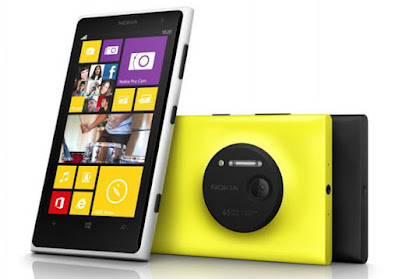 |
| Photo: GSMArena |
That is where the Lumia 1020 comes in. In technical terms, the camera was not on par with its Symbian predecessor. It may have the same number of Megapixels, but the sensor is smaller and has a lower micron pixel count. However, Nokia made up with that slight technical inferiority with the inclusion of OIS that was first seen in the Lumia 920, RAW format support, and manual control. Even the Xenon flash has been paired with an LED flash. Thanks to those hardware upgrades, you can hook up this smartphone with a slave flash and utilize it as real photography gear for a proper studio photoshoot. No, really - Nokia wasn't joking about it.
Who said midrange phones have to be awful?
When Samsung launched its own mobile payment solution in 2015 with Samsung Pay, it shocked the tech world because of its native support for Magnetic Secure Transmission (MST) machines. Although today's retail premise is switching to a newer and more modern Near Field Communication (NFC) technology, some premises are still relying on MST to this day and thanks to that native support, many would regard Samsung Pay as the prefered solution compared to Apple Pay or Google Pay.
Even though Samsung Pay would only be featured on selected Samsung smartphones, not all of them support both payment technologies. If you want one with both NFC and MST support, your choice has always been either the Galaxy S series or the stylus-focused Galaxy Note series.
 |
| Photo: GSMArena |
Enter the Galaxy A5 2017. This is one of all Galaxy A smartphones launched in 2017 to feature Samsung Pay with support for both NFC and MST technology. It also features a USB Type-C port and IP68 rating. The Galaxy A3 2017 may well be the cheapest variant of all, but it never sees the light of an official market release here in Malaysia. Hence, the A5 2017 made it to this list as it offers flagship-grade features in a modest 5.2" FHD screen for mid-range money. You can get a decent used example for the cheapest for around MYR 400, which is a real steal considering its original price tag of MYR 1,699 when it was brand spanking new three years ago.
Currently the last model of Motorola's Project Ara with a shatterproof screen.
Even though Motorola is still keeping the modular smartphone spirit alive to this day, they aren't the first company to come up with such an innovative idea. That honour goes to LG with the G5 that was launched in February 2016, some four months earlier than both Moto Z and Moto Z Force.
At that time, LG came up with an interesting modular feature called Magic Slot. The idea was that you took out the smartphone's battery and slot in any compatible accessories that you fancy such as a bigger battery with hardware camera control or an audio system with HiFi DAC support. Fast forward to Motorola with their own modular idea called Moto Mods, and we now have a two-way modular competition. While it is a serious fight, only one would win the battle and it goes to Motorola. Thanks to their pogo pin solution, there is no need to shut down the smartphone every single time you want to change accessories. Little wonders why LG decided to drop the modular idea with the G6 the following year, whereas Motorola soldiers on.
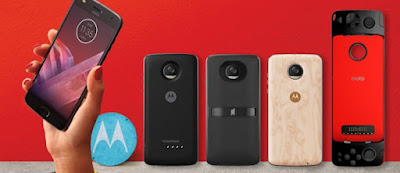 |
| Photo: Motorola |
- 2019 LG V50 ThinQ 5G/G8 ThinQ/G8X ThinQ/V50S ThinQ 5G
The spiritual successor of ZTE Axon M with a detachable dual-display case.
LG isn't enjoying market success around the world. With the continuing domination of Samsung and Apple alongside other value-focused brands such as Xiaomi, LG keeps on being a shadow in the smartphone world. That didn't stop them from releasing their own smartphones. In 2019, they have launched the fifth and eighth generation of the V-series and G-series lines respectively.First on the line is the V50 5G and the G8. In terms of electronic components, both shares pretty much identical setups. Both have QHD+ P-OLED screen despite the difference in size, IP68 and MIL-STD-810G, Qualcomm Snapdragon 855 chipset, FM Radio, 3.5mm audio jack, and identical camera modules. The most obvious difference between the two is the 5G bit - the V50 will be among the early adopters of the 5G network whereas the G8 will stay on with 4G LTE. As a side note, there is also a slight difference with the camera setup for the G8 as the USA market will only have a dual wide/ultrawide camera setup whereas the South Korean market will have the same triple wide/ultrawide/telephoto camera setup as the V50 5G.
As if the trio wasn't enough, LG decided to launch another version of the USA G8 for the rest of the world. Dubbed the G8X (or V50S 5G in South Korea), it continues LG's dual wide/ultrawide camera setup tradition since the G5 from 2016. Just like the V50 5G and G8, you get an AMOLED screen albeit at FHD+ resolution, IP68 and MIL-STD-810G, Qualcomm Snapdragon 855 chipset, FM Radio, and 3.5mm audio jack. Also, the V50S 5G supports 5G connectivity whereas the G8X stays on 4G LTE.
While they all look almost identical to any other flagship-grade Android smartphone, there is one standout feature that separates them from the rest of the field, something that we haven't seen since the days of ZTE Axon M: dual-display experience. Except for the G8, you can get yourself an optional detachable case called DualScreen. The idea is that it allows you to attach an additional screen for better flexibility and productivity. This means that you can run two completely different apps side-by-side together at the same time without worrying about app scaling issues since both screens look the same as any other smartphone screen. The best thing about the DualScreen case? You don't have to bring it with you all the time. You can always detach it when you finished using it and use the phone normally. That is the genius of DualScreen - attach it when you want to use the second screen for touch gamepad or touch keyboard, detach it when you finished with it. It couldn't get any simpler than that! Sorry Samsung Galaxy Fold, but I struggle to see foldable screen smartphones as the future.
That's it for Part 1. Stay tuned for Part 2 where I will talk about unusual smartphones with out-of-this-world design and ideas. I already mentioned the Nokia 808 PureView, but that isn't the only smartphone on the list. The Motorola Moto Z2 Force was originally supposed to be in Part 2, but that phone is now on my wishlist.
Click on the banner below to show your support.
#P2P
If you like this article and want to support my work, do me a favour by supporting me at Ko-fi. Your support is deeply appreciated and will serve as a motivation for me to keep this blog growing bigger and better in the future.
If you like this article and want to support my work, do me a favour by supporting me at Ko-fi. Your support is deeply appreciated and will serve as a motivation for me to keep this blog growing bigger and better in the future.
Click on the banner below to show your support.

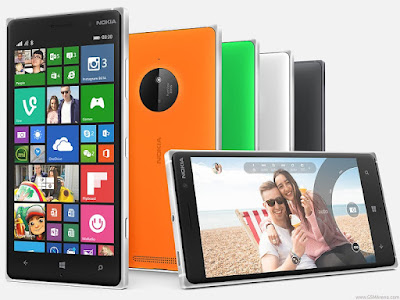
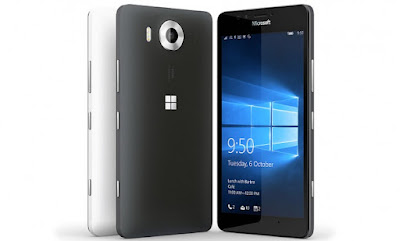

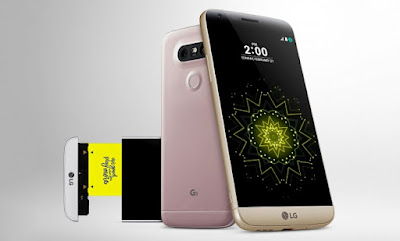



I missed Windows phone. I hated it at first cuz it was taking over my lovable Symbian phones. But then I bought the 920. It was amazing. Even now I still think Windows made the best OS hands down. They did it right. They started from scratch. But they were a couple years too late to the party. That year 2015 when they decided not to come out with any phones in order to wait for the 950 was their biggest mistake. Cuz with the 930 and 820 they were gaining momentum. Apps were slowly coming out. People were starting to actually embraced them. But in 2015 they lost all the momentum they had gained the previous couple years. Android is not even close in terms of look, speed and ease of usage. People are just dumb really. Sad sad sad
ReplyDeleteBeing a former Android user, I am so agree with you. I love the fluidity and the simplicity of Windows Phone. I also love the fact that Windows Phone performs so fast in low-end devices, even Android Go devices can lag a little. The keyboard is a gem, that little circular arrow definitely makes it much easier to move around instead of pointing the fingers at the screen.
ReplyDeleteBut for me, the 950 XL's camera is still a serious fighter. I have seen a lot of newer flagship smartphones have worse photo quality than the 950 XL. To this day, I still couldn't find any smartphone that can surpass its photo quality. The 1020 (and 808) is pretty much invisible.
Post a Comment
What do you think of this post? Share your thoughts with us.